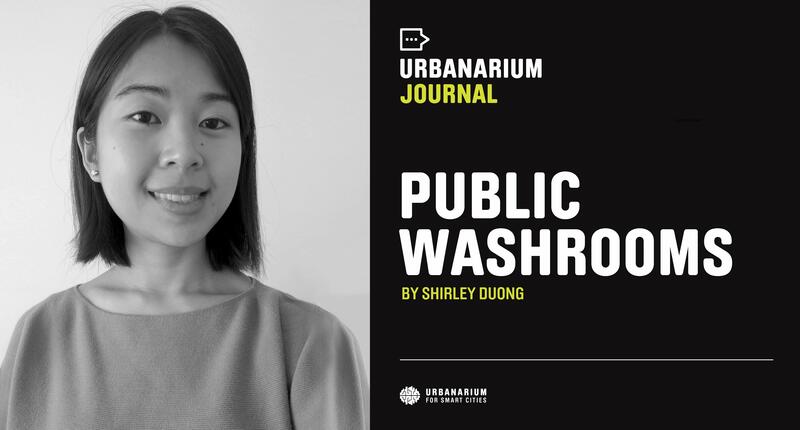
Growing up in a multi-generational immigrant family, the struggle to find available public washrooms was a constant struggle we faced. Whether it be finding a barrier-free washroom for my grandpa with Alzheimer’s who used a walker, or a family stall for my screaming cousin who refused to go into the womens toilets. We would be turned away at coffee shops and gas stations where staff ridiculed us for not making a purchase, or for not spending enough to warrant our whole family to use the facilities. I remember sneaking behind cashiers and shop owners into the back, and at times subtly passing the keys to my aunts before returning them to the counter. When free public washrooms were available in the park or station, everyone would rush to go in case there would not be another. It seemed like we were always searching for washrooms or lining up for them when we were out. These habits still live with me today – a washroom anxiety where I am constantly on the lookout for where to go next.
As the most intimate, yet public level of interaction between person and architecture, public washrooms have remained a neglected site of banality within our urban environments. Existing public washrooms are currently stretched thin over a wide geography across Vancouver and act as introverted objects that do not engage with their surroundings. Because they are essential tools that help us move in the city— allowing us to stay longer and go farther, and are critical spaces that can make cities more hospitable and public through interactions that encourage activity— it is necessary to place public washrooms at the forefront of our infrastructure and find solutions that go beyond the single toilet unit to foster new opportunities for interconnectedness and activity. These could be new public spaces in our city that are accessible and reflective of the real general public, offering different kinds of programs to generate accommodating spaces in our city where you are able to take care of yourself.
Only thirteen city-owned public washrooms are available in the downtown core, two of which are built facilities constructed underground and eleven which are single stall automatic self-cleaning toilets. These single entities are not sufficient in meeting the needs of our population and in turn have forced us to become reliant on private businesses to provide these services.
Initially, my intention to pursue public washrooms as the topic for my graduate studies seemed facetious and lighthearted. But as I dove deeper into relevant articles and statistics concerning public washroom provisions within Metro Vancouver, it revealed a great discrepancy between what we need and what is being provided. Often articles simply stated that our city, among many other cities in the world, needed more public washrooms but did little to offer solutions to this issue. Marginalized populations and local organizations are being left out of the planning and implementation of this infrastructure as the city’s approach is currently departmentalized. It is an ongoing challenge as endless considerations impact a city’s ability to provide equitable and diverse access to public health and transportation services.
Through working with the Urbanarium and participating in the two Studios on public washrooms, I was able to refine the focus of my thesis research. The challenge going into the Studios was what do public washroom facilities look like in just, green and thoughtful cities?
These sessions provided insight through hearing everyone’s personal stories, lived experiences and professional challenges from those whose work tackles the complexities surrounding this topic. Intricacies around our perceptions, attitudes, and expectations became the driving factors for my graduate project as I reimagined how public washrooms could be placed at the forefront of our infrastructure and be reprogrammed as tools for activity and interconnectedness.
In a post-Studio conversation with Francois Nion, Executive Vice President of JCDecaux, the company who installs and maintains the downtown toilets, he explained that the obstacle for provision was not the construction of physical units, but the ongoing maintenance and service costs required. Providing these public services is not cheap, and these types of public projects are often objected by the city and public due to the seemingly expensive nature of its overall cost.
For instance, a current proposal to implement a new prefabricated ‘Portland Loo’ in Cooper’s Park is facing much criticism as the project is estimated to cost $645,000. The toilet itself costs roughly $150,000 and the remaining fees are expected to cover the installation, engineering, and sanitary and water services. With mainly negative feedback, the public has demanded the city to spend these funds on more important projects. This reveals critical questions as to why we are so reluctant to spend money on essential public services such as washrooms. If these facilities did more than provide a single-toilet unit, would people be more inclined to spend money on these facilities?
As existing public washrooms are situated in the background of public spaces, they act as introverted objects that do little to contribute to its surroundings. Since they are the most expensive built spaces per-square-foot for cities, it is necessary to integrate public washrooms as vital nodes in our city networks and inspire civic pride. This can be achieved by reprogramming washrooms as not just single stalls but centers for hospitality and interconnectedness that encourage us to take care of ourselves. These could be different spaces that make us feel comfortable and safe within the city by accommodating to our needs and enhancing our surroundings with public architecture in which we can inhabit. From seating areas to water stations, and Wi-Fi hotspots to wayfinding, better public washrooms can animate the urban block through added programming and amenities. If we start with washrooms and build out from there, that shared basic need, would our cities become more equitable, sustainable and considerate?